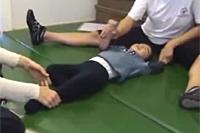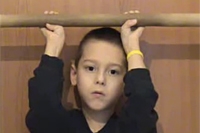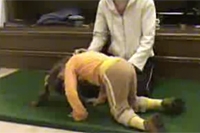
Integral neurorehabilitation in cooperation with the AKUMED Centre
- In cerebral palsy
- Multiple sclerosis and other inflammatory diseases of the nervous system
- In the case of anxi-depressive syndrome, depression and panic disorder
Integral Neurorehabilitation (INRA) is an original therapeutic protocol consisting of the simultaneous use of different therapeutic methods to restore and stimulate the motor functions of the brain. Speech and cognition are also restored in parallel. These methods include:
- Training
- nutrition
- electromagnetic stimulation
- sensory stimulation
- breathing
- hydration
- muscle and nerve stimulation
- TheraSuit method
Philosophy of Integral Neurorehabilitation:

- Neuroplasticity compensates for brain damage and dysfunction through the process of brain growth and reorganisation (the younger the brain, the greater the neuroplasticity).
- brain growth is driven by brain stimulation (via sensory input), brain growth is driven by neuroplasticity
- Brain growth can also be stimulated per se by increased nutrition, hydration and respiration
- neurons are biological electromagnetic units and their metabolism is subject to electrical and magnetic influences
The simultaneous use of different therapeutic methods creates a synergy where different therapies optimise and stimulate each other. This synergy creates the great therapeutic potential of INRA. INRA can be used for any non-progressive brain injury and disease at any age. However, the younger the brain, the greater the capacity for recovery.

The therapy is carried out for 3-4 hours every day. Each patient has their own personal trainer. The exercise programme is determined by the doctor, depending on the initial motor condition of the individual. The training consists of modules, each module consisting of a single set of exercises to strengthen the muscles and train posture, lasting two to three hours. The neurodevelopmental pattern of children's motor skills is taken into account in the design of the module. Once the primary motor goals are achieved, the programme is modified, etc. After the training, stimulation is provided by a doctor for 1 hour.
The results of this treatment are monitored via video. This score assesses the motor fitness of the child in relation to the optimum, which is the normal motor development for age, which is 100%. It monitors changes in motor status before and after the use of a specific rehabilitation therapy.
